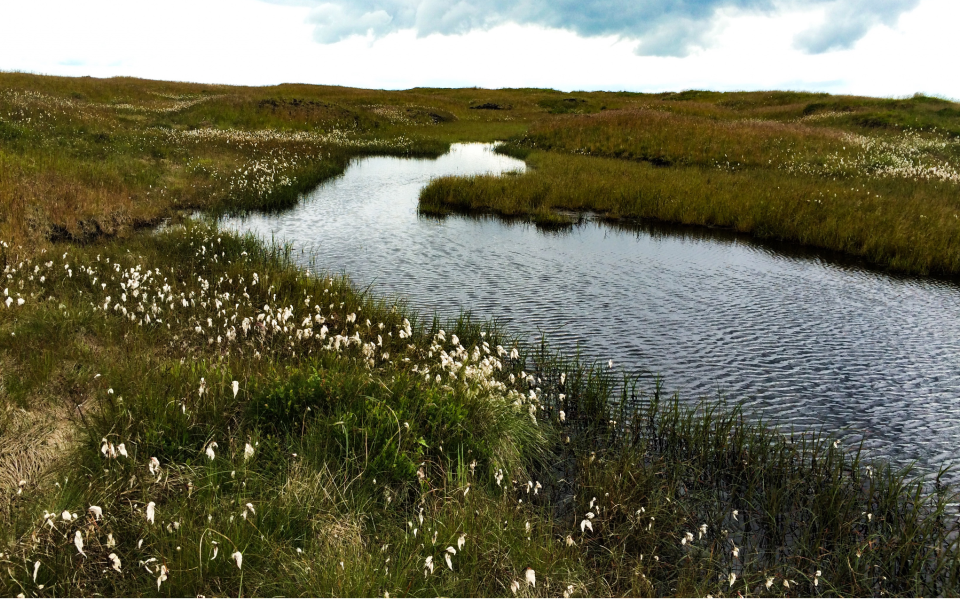# F3 Wetland vegetation: Modified/active peat bog (a)

Photo: PDNPA
# Definition of landscape category
F3 Wetland vegetation - Areas of vegetation which are controlled by the permanent or frequent periodic presence of water.
# UK Definition of habitat
- Woodland Trust scrub https://www.suffolkwildlifetrust.org/conservationadvice/meadows-and-grassland/grassland-and-scrub (opens new window)
# Aerial Definition

# In the Peak District
There are approximately 19,700 ha of blanket bog in the PDNP, the vast majority of which (89%) is in the Dark Peak. Nearly all is in a degraded and damaged state and under restoration management. About 9% of UK blanket bog is found within the PDNP. Almost the entire area is designated SAC, SPA and SSSI, recognising the national and international importance of this habitat. The SPA designation is due to the importance of moorlands in supporting internationally important breeding populations of golden plover (Pluvialis apricaria), merlin (Falco columbarius**)** and dunlin (Calidris alpina). The Dark Peak SSSI designation also features other bird species: meadow pipit (Anthus pratensis), red grouse (Lagopus lagopus), curlew (Numenius arquata), twite (Linaria flavirostris), ring ouzel (Turdus torquatus), wheatear (Oenanthe oenanthe**)** and whinchat (Saxicola rubetra). A range of other important birds as well as invertebrates, mountain hare (Lepus timidus), red deer (Cervus elaphus), adder (Vipera berus) and common lizard (Zootoca vivipara) are also found on PDNP moorlands.
Degraded/modified blanket bog and associated peatlands are more widespread than any other habitat in the PDNP moorlands and are important not only as a habitat but also as a store of carbon. However, peat in the PDNP is no longer accumulating as it should, and research suggests that the region’s peatlands have become a source rather than a sink of carbon, contributing to climate change.
After a long period of loss and degradation, the amount of blanket bog in the PDNP is currently relatively stable. The issue remains the condition of the blanket bog. A combination of damaging factors, including peat cutting, air pollution, drainage, managed burning and wildfires, has resulted in blanket bog that is drier than it should be, with gullying and erosion in many areas. The work of the Moors for the Future partnership and others has begun to reverse this trend, by revegetating the exposed peat and rewetting the moor (see D2, D6 & D7). Peat bog in the aerial imagery is easily recognisable as a result of its damaged state. Eroded drainage gullys form dendritic systems across the peat. Restoration works are visible in some locations and greener/wetter conditions can be seen where gulleys have been blocked to slow water flows/ loss of peat and re-establish bog vegetation.
# Useful links
← Inland Rush Pasture →